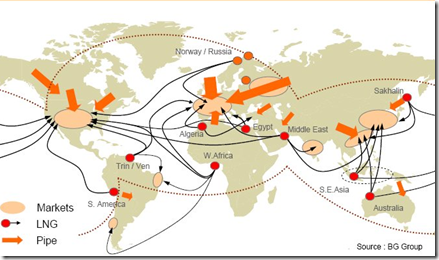Blog Archives
Malaysia Aims to Become LNG Trading Hub through New $1.3B Terminal
Malaysia is aiming to become Asia’s liquefied natural gas (LNG) trading hub by 2020 with the establishment of a $1.3 billion LNG terminal in the Pengerang Integrated Petroleum Complex (PIPC), the country’s Prime Minister Najib Razak said in a statement Thursday.
The LNG terminal – also known as the Pengerang Independent Deepwater Petroleum Terminal (PIDPT) – will be developed by the Johor state government, Netherland’s Royal Vopak and Malaysia’s Dialog Group.
PIDPT – which will be constructed over two phases – is designed to have a total storage capacity of five million cubic meters. The terminal will be used for storage, loading and regasification of LNG, both for trading and domestic use. The first construction phase of PIDPT has already started, and is scheduled for completion by 1Q 2014.
“This will be the first independent LNG trading terminal in Asia, allowing multiple LNG users to store and trade the product. It will spur the growth of the [petroleum] industry, and help establish Malaysia as Asia’s LNG trading hub,” Razak said.
PIPC will also house Petronas’ new $20 billion refinery and petrochemical integrated project. The project – scheduled to be commissioned by 2016 – will be able to produce 300,000 barrels per day of refined products.
Malaysia’s PIPC has been touted as a potential strong competitor to Singapore’s Jurong Island – an artificial island located to the southwest of the main island of Singapore, off Jurong Industrial Estate. Singapore is, at present, the Asian price discovery center and trading hub for oil products due to its significant oil storage and trading infrastructure in Jurong Island. The island which is home to oil and gas companies – such as ExxonMobil, Shell, BP, BASF, Celanese, Mitsui Chemicals – sees up to 1.3 million barrels of crude processed each day.
Singapore is also aggressively developing its oil and gas storage infrastructure. The island-city, through the development of the Jurong Rock Cavern (JRC) project, will create an additional 1.47 million cubic meters of oil storage space by 2013. JRC is the first underground rock cavern for oil storage in Singapore and Southeast Asia. Construction work on JRC started in February 2007.
Related articles
- Malaysia ‘wants to be Asia’s hub’ (todayonline.com)
- BG Group inks pipeline deal for LNG terminal (calgaryherald.com)
- Shell to Build Kitimat LNG Terminal Despite China Investment (mb50.wordpress.com)
- U.S. Expected to Approve Expanded LNG Exports to Japan (mb50.wordpress.com)
- USA: Golden Pass Files with DOE to Export LNG (mb50.wordpress.com)

 Continents of the World
Continents of the World